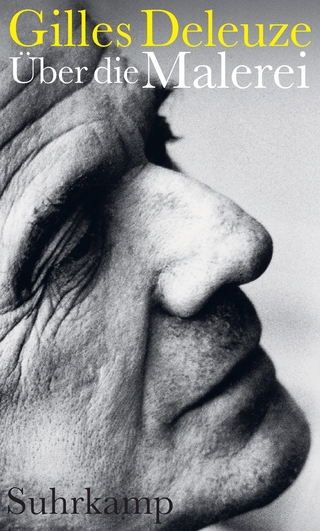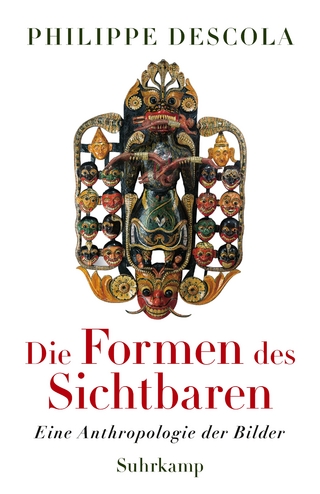
The Didi-Huberman Dictionary
Seiten
2023
Edinburgh University Press (Verlag)
978-1-3995-0098-2 (ISBN)
Edinburgh University Press (Verlag)
978-1-3995-0098-2 (ISBN)
A comprehensive introduction to the philosophy of Georges Didi-Huberman in dictionary form
Offers a cross-disciplinary, comprehensive overview of Didi-Huberman's thought
Provides both an introductory research tool for those encountering Didi-Huberman's philosophy for the first time as well as a resource for scholars who want to deepen and extend their knowledge of Didi-Huberman's work
Presents entries on the key concepts, figures, and motifs in his work and maps the richness of his philosophic, psychoanalytic and cultural references and inspirations
Helps to situate Didi-Huberman's critical position on Western metaphysics and humanism
Gives insight into the chronological development of his key concepts and theories since 1980s until today
Elaborates the contemporary relevance of Didi-Huberman's image theory beyond the areas of philosophical aesthetics and art history in political philosophy, ethics and critical epistemology, as well as for post-colonial thought, critical race analysis and feminism
The Didi-Huberman Dictionary is a specialized introduction to the thought of contemporary French philosopher Georges Didi-Huberman, best known for his path-breaking philosophy of image and for his impact on the 'visual turn' in theoretical humanities.
With over 150 entries, including 125 main entries, the dictionary is a useful research tool for students coming to Didi-Huberman's work for the first time. Entries range from Theodor Adorno and Anthropology through to Materiality and Memory and on to Aby Warburg and Witnessing. Researchers already familiar with his work, but who want to develop a multi-faceted and more comprehensive understanding of the philosophical and cultural references woven into his thought, will gain deeper knowledge of the nuances of his conceptual apparatus, given the interreferential and intertextual aspects of his work.
The dictionary identifies and explains his key figures, inspirations and philosophical metaphors as well as introduces Didi-Huberman's polemics with other contemporary philosophers, including Giorgio Agamben and Jacques Ranci re. Entries on concepts and motifs from Didi-Huberman's major texts that are (as of yet) not translated into English - Ce que nous voyons, ce qui nous regarde (1992), and Ninfa moderna (2002) - are also included.
This is your one-stop, go-to resource for learning more about the innovative, exciting work of Georges Didi-Huberman.
Offers a cross-disciplinary, comprehensive overview of Didi-Huberman's thought
Provides both an introductory research tool for those encountering Didi-Huberman's philosophy for the first time as well as a resource for scholars who want to deepen and extend their knowledge of Didi-Huberman's work
Presents entries on the key concepts, figures, and motifs in his work and maps the richness of his philosophic, psychoanalytic and cultural references and inspirations
Helps to situate Didi-Huberman's critical position on Western metaphysics and humanism
Gives insight into the chronological development of his key concepts and theories since 1980s until today
Elaborates the contemporary relevance of Didi-Huberman's image theory beyond the areas of philosophical aesthetics and art history in political philosophy, ethics and critical epistemology, as well as for post-colonial thought, critical race analysis and feminism
The Didi-Huberman Dictionary is a specialized introduction to the thought of contemporary French philosopher Georges Didi-Huberman, best known for his path-breaking philosophy of image and for his impact on the 'visual turn' in theoretical humanities.
With over 150 entries, including 125 main entries, the dictionary is a useful research tool for students coming to Didi-Huberman's work for the first time. Entries range from Theodor Adorno and Anthropology through to Materiality and Memory and on to Aby Warburg and Witnessing. Researchers already familiar with his work, but who want to develop a multi-faceted and more comprehensive understanding of the philosophical and cultural references woven into his thought, will gain deeper knowledge of the nuances of his conceptual apparatus, given the interreferential and intertextual aspects of his work.
The dictionary identifies and explains his key figures, inspirations and philosophical metaphors as well as introduces Didi-Huberman's polemics with other contemporary philosophers, including Giorgio Agamben and Jacques Ranci re. Entries on concepts and motifs from Didi-Huberman's major texts that are (as of yet) not translated into English - Ce que nous voyons, ce qui nous regarde (1992), and Ninfa moderna (2002) - are also included.
This is your one-stop, go-to resource for learning more about the innovative, exciting work of Georges Didi-Huberman.
Magdalena Zolkos is Associate Professor in the Department of Social Sciences and Philosophy at University of Jyv skyl and, previously, Humboldt Research Fellow at Goethe University in the Frankfurt Memory Studies Platform. She is the author of Restitution and the Politics of Repair: Tropes, Imaginaries, Theory (Edinburgh University Press, 2020), co-editor of Contemporary Perspectives on Vladimir Jank l vitch: On What Cannot Be Touched (Lexington Press, 2019) and co-editor of a special issue of Angelaki on Witnessing After the Human (2022).
| Erscheinungsdatum | 30.11.2022 |
|---|---|
| Reihe/Serie | Philosophical Dictionaries |
| Verlagsort | Edinburgh |
| Sprache | englisch |
| Maße | 156 x 234 mm |
| Themenwelt | Kunst / Musik / Theater ► Allgemeines / Lexika |
| Kunst / Musik / Theater ► Kunstgeschichte / Kunststile | |
| Geisteswissenschaften ► Philosophie | |
| ISBN-10 | 1-3995-0098-8 / 1399500988 |
| ISBN-13 | 978-1-3995-0098-2 / 9781399500982 |
| Zustand | Neuware |
| Informationen gemäß Produktsicherheitsverordnung (GPSR) | |
| Haben Sie eine Frage zum Produkt? |
Mehr entdecken
aus dem Bereich
aus dem Bereich
Vorlesungen März-Juni 1981 : die legendären Vorlesungen des großen …
Buch | Hardcover (2025)
Suhrkamp (Verlag)
38,00 €
eine Anthropologie der Bilder
Buch | Hardcover (2023)
Suhrkamp (Verlag)
68,00 €


